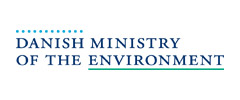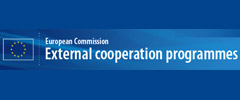Plasticizers go from breast milk to baby
Research finds that even tiny infants are getting a dose of phthalates.
17.07.2006 |Helen Lynn
Infants imbibing breast milk may also be sucking down a high dose of phthalates, the ubiquitous toxic plasticizers that are in many consumer products, from lipstick to vinyl flooring. New research published today on ES&T’s Research ASAP website (DOI: 10.1021/es060356w) provides one of the first snapshots of phthalate delivery through breast milk. For 6 months, scientists tracked phthalate levels in the breast milk of Canadian mothers, but the health implications remain unclear and the data show that the amount of the toxic ingested by infants can vary from feeding to feeding.
Babies may be getting phthalates with their breast milk, but the implications remain unknown.
The preliminary results of the long-term study show significant levels of phthalates in breast milk from >80 women: The mean values of di-(2-ethylhexyl) phthalate (DEHP), dibutyl phthalate (DBP), and diethyl phthalate (DEP) were 222, 0.87, and 0.31 ppb (ng/g), respectively, although DEP appeared in only a few samples. (Three other target estersˇdimethyl phthalate, butyl benzyl phthalate, and dioctyl phthalateˇwere not found.) The researchers, led by Jiping Zhu of Health Canada, translated that load to a phthalate esters dose of 167 µg/d for a 7-kg baby drinking 750 g of breast milk daily.
The team also reported that the amount of each phthalate varied in a subset of 21 women tested. In some women, the levels gradually increased during the study period, while other mothers showed declining concentrations or levels that increased and then declined. The team could not control for that variation, which they hypothesized could be attributable to exposures during the women’s daily activities to products containing phthalates. The researchers compared their results with those of a previous study of German women, finding that the levels of DEHP were much higher and of DBP much lower in the Canadian mothers than in the German mothers. The disparity between these studies adds a regional twist to the exposure and transmission story that remains to be explained.
Overall, the work is “another piece of evidence that phthalates are being detected in biological samples of many types,” from urine to blood, says Gary Adamkiewicz, a research associate at the Harvard School of Public Health. He adds that the results raise more questions than they answer. “The fact that you’re seeing it in breast milk highlights the fact that you need to understand the effects of a significant dose during that first year of life,” he says. “What are the health effects down the road? What are the health effects for that child? That is the one big question highlighted.”
Other factors could possibly produce the variability documented within individual mothers, Adamkiewicz notes. But if exposure is the key, then more controlled studies (although incredibly difficult) could lead to ways of limiting phthalates in everyday use and thus minimizing the amount a mother carries in her breast milk. “This is not a call to stop breast-feeding,” he emphasizes.
Phthalates are quickly metabolized, within a matter of hours on average, and kicked out of animals’ systems, says Antonia Calafat, a research chemist with the U.S. Centers for Disease Control and Prevention’s National Center for Environmental Health. Calafat emphasizes that she has not seen the research of Zhu and colleagues, but she says that DEHP could partition into fat, so its presence in fatty breast milk is not surprising. She also notes that earlier studies that used phthalate diesters (generally in blood) as markers of exposure were limited to highly exposed populations (e.g., in occupational settings) because the analytical methods for measuring these diesters are difficult. Typically, detections of phthalates come from measurements of monoesters, after the body metabolizes the phthalate diesters.
The Health Canada researchers document some of the precautions they took to avoid outside contamination, such as using glass and nonplasticized containers for collecting the breast-milk samples. The researchers also emphasize that the benefits of breastfeeding, both social and physical, still outweigh any perceived hazard of phthalate consumption in infants. The compounds’ effects on children remain controversial, though previous studies in rats as well as humans show that they potentially affect development. ˇ NAOMI LUBICK

































